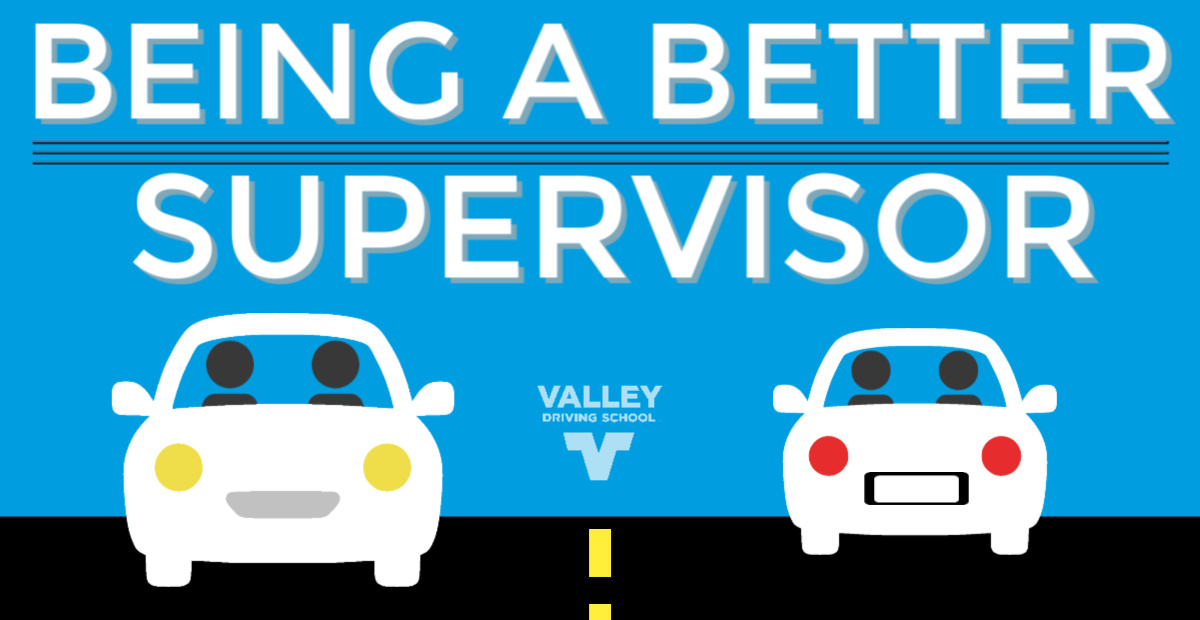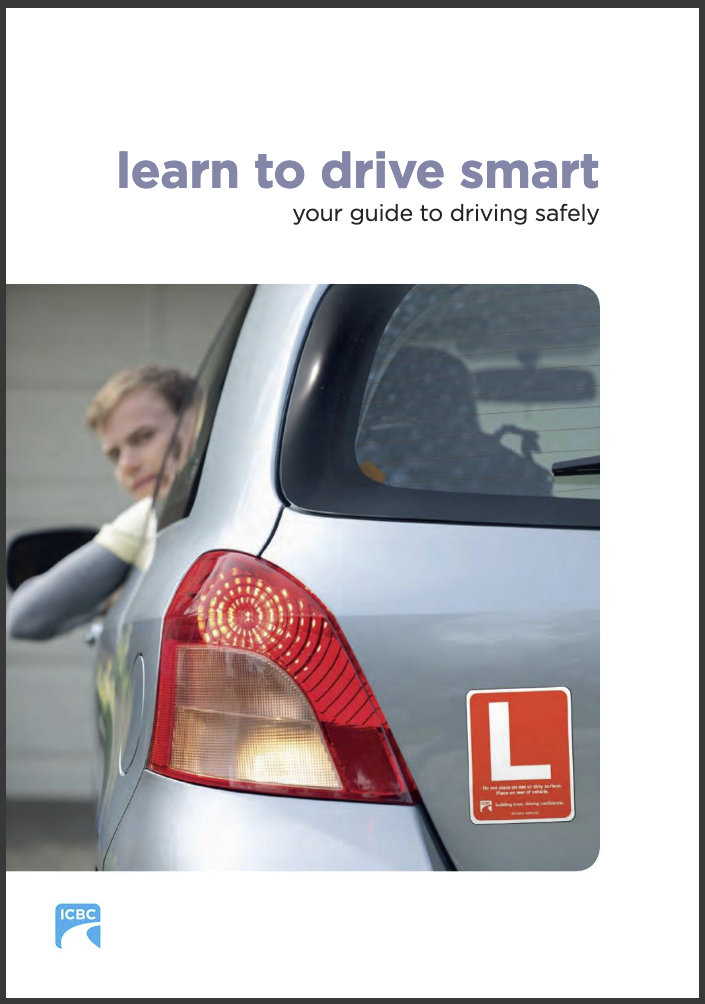Supporting a new driver is an important role and can be asked of parents, guardians, family friends, or extended family members. For many of us, this means stepping into a different position than the one we’re used to; mentoring and guiding a new driver to become a safe, confident, and independent road warrior. While it may seem like you’re just there to fulfil the “qualified supervisor” restriction that ICBC requires of new drivers, this role is far more than that.
In this post, we’re taking a look at what you can do to be a better qualified supervisor for someone who is learning to drive.

Be Prepared

Being a supportive supervisor begins before you get into the vehicle together! Before venturing out, whether it’s for the first time or the tenth time, you should always plan ahead. Discuss what you and the new driver think are skills that should be worked on for this drive. Chances are, you may each have different ideas on what you want to accomplish or practice, and it’s best to decide on what you’ll be doing before one of you is behind the wheel. In addition to being on the same page, discussing the plan ahead of time will also give you a chance to refer to the Learn to Drive Smart Manual if any rules or regulations need to be clarified beforehand.
Calm, Ready, and Communicating
If you’re not quite ready to become a coach or mentor to a new driver, don’t be alarmed! You are not the only nervous supervisor out there - knowingly sitting beside someone who has never driven or has only driven a handful of times can be stressful. You can start with some exercises that keep you in the driver’s seat but open the lines of communication for someone who is learning to drive. During drives where you are still in control start getting into the habit of providing “running commentary” which we define as: an oral description of events, given as they occur. Speaking through every maneuver that you make will open up a new driver’s eyes to see every small detail that happens throughout a drive.
For example, as a seasoned driver, one could just say, “I’m making a left turn” but when you are using running commentary you would break it down and, instead, say,
“I am going to turn on my left-turn signal and check for nearby pedestrians, cars, and other road users as I approach the intersection. I will pull into the intersection because the light is still green, but I see there are oncoming cars so I’ll come to a stop after my entire vehicle is clear of the crosswalk. The oncoming cars are going straight through the intersection, so once they are clear, I will shoulder check left to make sure that there are still no pedestrians, cars, or other road users in my path. I’ll turn my wheel to the left to start my turn and straighten it out as I pull into the inside lane.”
There’s quite a difference! Speaking out loud, through all the steps involved - no matter how small it seems - allows the new driver to understand and become aware of all the maneuvers, checks, and thought processes that are involved in driving, and how focused you need to be on every detail. Once the new driver understands the concept behind running commentary, they can they start providing it while you are still driving.
When you are ready to lend out your keys and become a supervisor, make sure that you are in the right frame of mind: whether that means meditating first, listening to quiet calming music throughout the drive (as long as the driver is comfortable with it), or just putting yourself into a relaxed mindset. The learner will need you completely focused on what they are doing and what is going on on the road so make sure, in addition to clearing your mind, you also clear away any hand-held distractions too!
Getting Behind the Wheel
Those who are new to the road will need to eventually get behind the wheel themselves and when they do, it is best to start from a curbside on a low-traffic street or drive them to an empty parking lot and then let them take over. Begin slow and simple, instructing the driver to start and stop in a straight line. This will allow them to get a handle on the foot pedals without having to think about steering too much. After the driver has a handle on controlling their foot pedals, have them work on basic steering. This can be accomplished by pulling away from and driving back along a curb - if you’re in a parking lot with no curbs, use the painted stall lines as a guide instead!

Once the driver is feeling a bit more comfortable and confident with their driving skills, whether this takes an hour in a parking lot or a week in a parking lot, you can start to work on other driving skills. A great way to introduce maneuvers is to start with simple maneuvers and build into more complex moves as they get more comfortable with each step. For example: taking three right turns may be easier than starting with a left turn (and it will get you to the same location!), so build confidence with right turns and then start making left turns. Another example: once you move into making left turns, it is easier to start with intersections that give an advance green light rather than heading into a left hand turn that involves turning across 2 lanes of oncoming traffic with no advance green light.
Give Direction, Not Directions
Communication still remains key while you’re in the passenger seat. Remember to actively think about how you are speaking to your supervisee and what kind of feedback you are providing. How you deliver your instructions and coaching will have a massive impact on a learning drivers success and their mindset towards their driving journey. Instead of getting out there and telling them exactly what they need to do and when they need to do it, allow the driver the opportunity to think independently about what their next step or steps will be. For example, instead of telling your new driver; “shoulder-check, turn on your signal, check your mirrors, and then move over if it’s safe,” ask them; “what will you need to do if I ask you to make a right-hand turn ahead?”

Giving our drivers the chance to think about the steps, instead of being told step-for-step what to do, will give them the tools they need for driving alone when the time comes and will make them less reliant on someone else’s help. This will come in handy both when they are able to legally drive on their own, as well as when they need to get through a road test without having you around!
Communication is also key when you are providing instructions - give your new driver directional instructions well in advance. A last minute "turn here!!" can be jarring and stressful, for both of you, and can lead to unexpected and unwanted results. Instead, know your own plans and route well ahead of time and use instructions that are more along the lines of "at the next major intersection, let's take a right".
Finish Strong
After each session has finished, take a few minutes to discuss what happened on the road and what could be focused on next time. Improvements are likely to be needed, for both the new driver and yourself, as the supervisor, and it helps to talk about it right away so the ride is still fresh for everyone. Not all on-road sessions will go according to plan, but it’s important to find some positives from the session to focus on and make sure that both the lines of communication and plans for ongoing practice remain intact.
Ensure that the learner is clear on what they’ll need to work on from one session to the next and break out the Learn to Drive Smart Manual to clarify what the correct information and procedures are. Also be open to any critiques from the driver - everyone learns a bit differently and they may have some feedback on how you can be a better supervisor.
